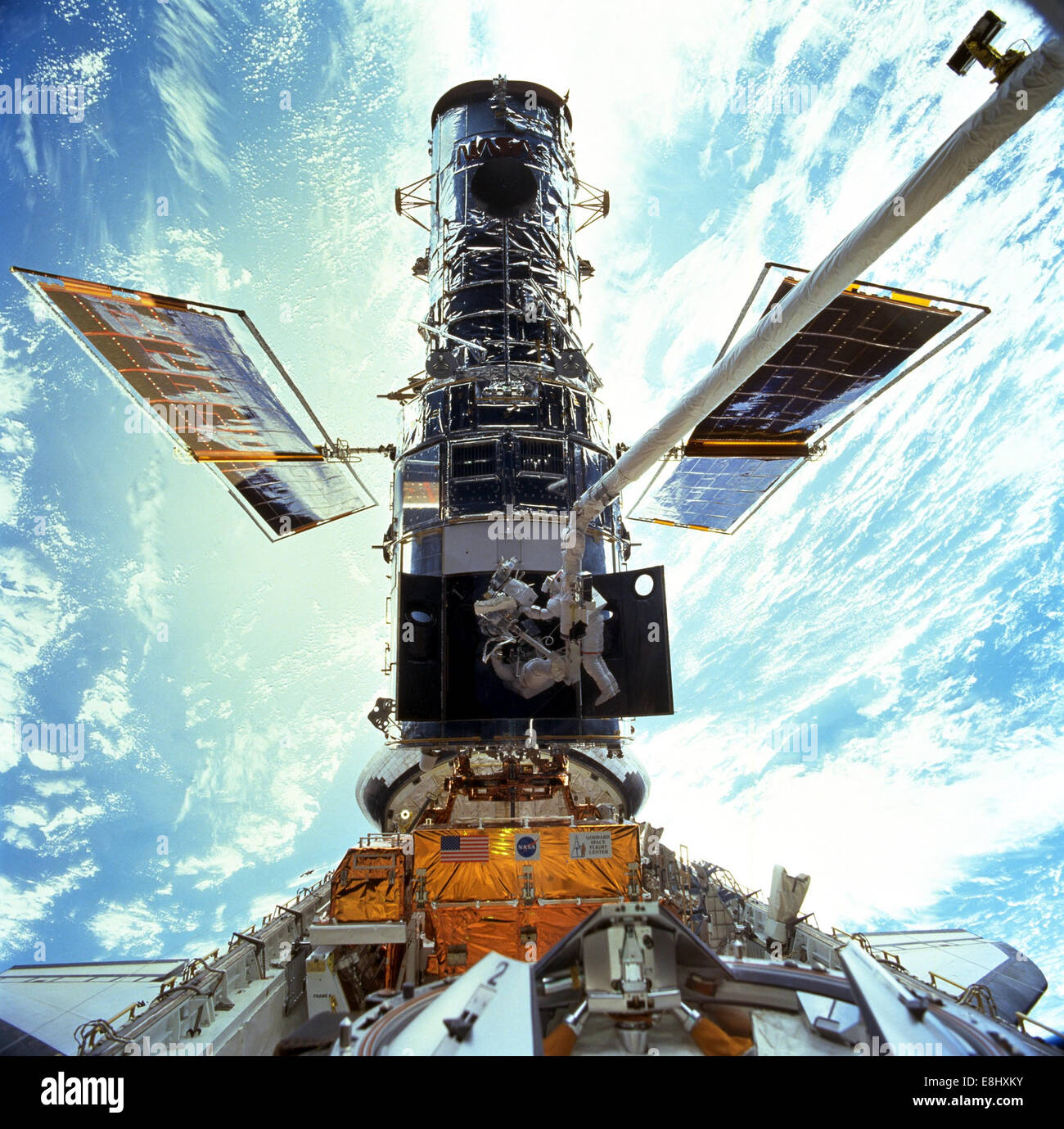The Hubble Space Telescope, an emblematic symbol of astronomical innovation, has long captivated both the scientific community and the general public alike. Over the years, its relentless gaze into the cosmos has yielded seismic shifts in our understanding of the universe. An impending upgrade to this venerable observatory seeks to enhance its capabilities further, promising not merely improved technology, but a profound shift in perspective regarding our place in the cosmos.
Launched in 1990, the Hubble Space Telescope revolutionized the field of astronomy. Unlike terrestrial observatories, Hubble operates beyond the distorting influence of Earth’s atmosphere. This unique positioning grants it an unparalleled vantage point, enabling astronomers to capture stunning images and collect invaluable data. However, as with any technological apparatus, the march of progress necessitates periodic upgrades and improvements. The upcoming modifications to Hubble can be seen as a testament to humanity’s insatiable quest for knowledge and exploration.
The upgrade will incorporate advanced instrumentation, allowing for enhanced observational prowess. Primarily, this upgrade is focused on improving the telescope’s capacity for capturing multispectral data across various wavelengths. Utilizing more sophisticated detectors will empower Hubble to gather additional information from the ultraviolet and near-infrared spectra, fields that have remained somewhat underexplored. This newfound capability is crucial; many celestial phenomena emit light in ranges that conventional instruments may overlook, thus limiting our comprehension. For instance, dark matter and its gravitational influences, elusive yet omnipresent, are often only detectable through their effects on surrounding matter.
The Hubble Space Telescope has been pivotal in delineating the acceleration of the universe’s expansion, a phenomenon intricately tied to dark energy. However, the underlying physics of these concepts remain poorly understood. Profoundly impacting cosmological theories, any upgrade that enhances our observational capacity helps refine existing models or, potentially, admits new ones. This aligns perfectly with the foundational principles of scientific inquiry, where hypotheses are continuously tested and refined in light of new data.
Beyond cosmology, the focus on stellar formation processes and the intricate dynamics of galactic structures will benefit immensely from this upgrade. The ability to capture more nuanced observations of star formation regions—clouds of gas and dust where new stars emerge—could lead to revelations about the lifecycle of galaxies themselves. As our observational techniques evolve, so too does our understanding of fundamental processes that govern not only the life of stars but the very fabric of cosmic existence.
Moreover, the upgrade is expected to include enhancements to the telescope’s gyroscopic systems, which are essential for stabilizing and orienting the instrument for precise observations. A finer degree of control in these systems equates to less error in imaging, ensuring that every shot taken depicts the cosmos in its full splendor. Such precision is indispensable in the era of increasingly sophisticated astronomical inquiries, particularly when examining the faintest of celestial bodies whose light may require extensive exposure times to capture adequately.
The implications of these upgrades extend beyond technical specifications. The latitude of research questions that may be pursued will expand considerably. The potential for unexpected discoveries looms large. The nature of scientific exploration is such that one question invariably leads to several others, creating a complex web of inquiries that fosters a deeper curiosity about the universe. Will the improved observations reveal previously unseen influences of dark matter on large-scale structures? What will we learn about exoplanets orbiting distant stars, and how will this knowledge impact our understanding of planetary systems? The possibilities are as vast as the universe itself.
The Hubble Space Telescope’s undergoing modernization signifies a broader narrative about human aspiration and ingenuity. It exemplifies how each advancement nudges the boundaries of what we consider possible. The act of sending astronauts into space for repairs and upgrades is a physical manifestation of that ambition, a choreography of human courage and technical expertise, dancing amidst the stars. Astronauts train meticulously for missions aboard the International Space Station, honing their skills for the intricate tasks required in Hubble’s servicing. This human-element intertwines with the technological narrative, forming a compelling tapestry of exploration, risk, and discovery.
As the telescope receives its long-deserved makeover, it invites humankind to ponder deeper existential questions, beckoning us towards a renaissance of curiosity. It encourages the contemplation of humanity’s fragility, resilience, and ultimately, its role within this vast cosmic theater. The promise of new insights from Hubble’s upgraded systems serves as a clarion call to scientists and enthusiasts alike, a continuation of the quest to unravel the enigmas that pervade our understanding of reality.
In conclusion, the upgrade of the Hubble Space Telescope represents not merely a technical enhancement but a philosophical endeavor. It extends an invitation to peer deeper into the cosmos, to question our existence, and to refine our cosmological models as we navigate the unknown. Each advancement serves as a reminder of the legacy of inquiry and the dynamic nature of scientific pursuit. As humanity gazes upward, the mysteries of the universe beckon, richer and more intricate than ever before.










